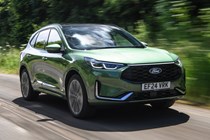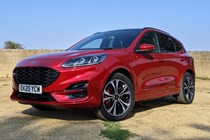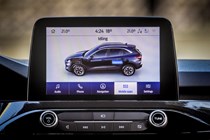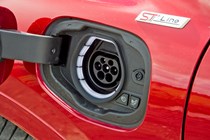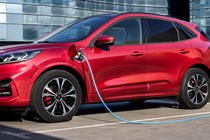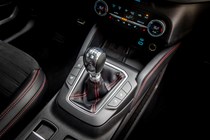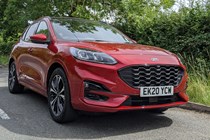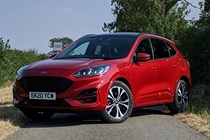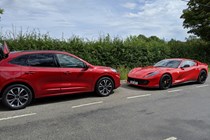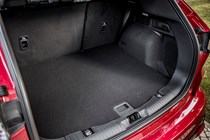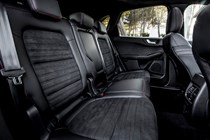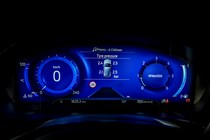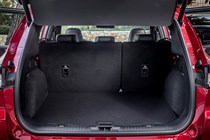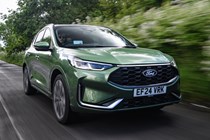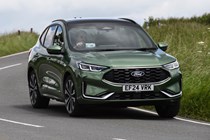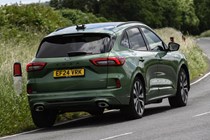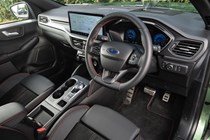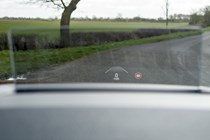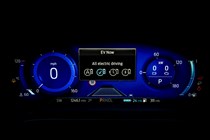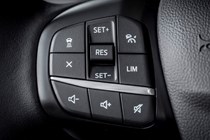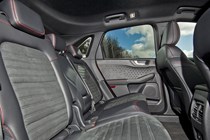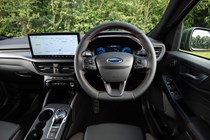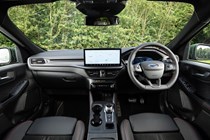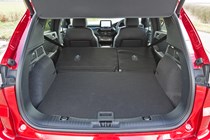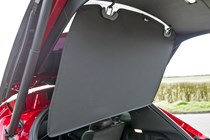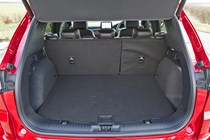Ford Kuga engines, drive and performance
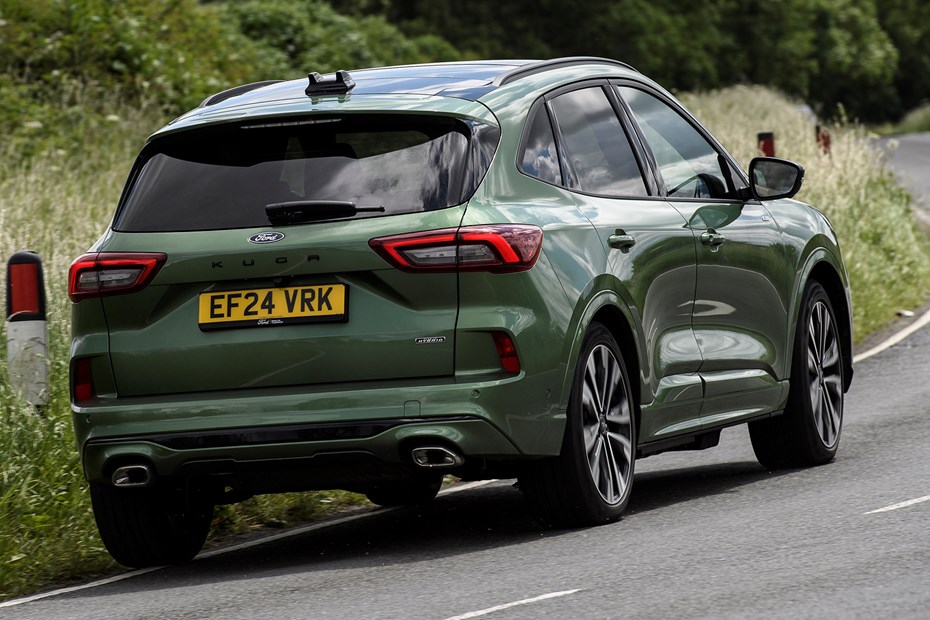
- Three engines available
- Hybrids deliver good fuel economy
- One four-wheel drive option
Petrol engines
The entry-level engine in the Kuga line-up is a turbocharged 1.5-litre three-cylinder petrol unit. It develops 150hp and 240Nm of torque, which Ford says is enough for a 0–60mph time of 9.5 seconds and a top speed of 121mph when paired with its standard six-speed manual gearbox.
For undemanding drivers, we’d say that’s plenty. We haven’t yet driven a Kuga with this engine, but we have spent a lot of time with a Focus fitted with the same unit. We found it to be responsive, smooth and powerful in the hatchback, although we expect it’ll feel less muscular in the larger Kuga.
Hybrid engines
You have two choices here – one full hybrid and one plug-in hybrid. Both are based on the same 2.5-litre four-cylinder petrol engine, and both send drive to the front wheels via an automatic gearbox. The full hybrid model has 180hp which Ford says is enough for a 0–60mph time of 9.1 seconds and a top speed of 122mph.
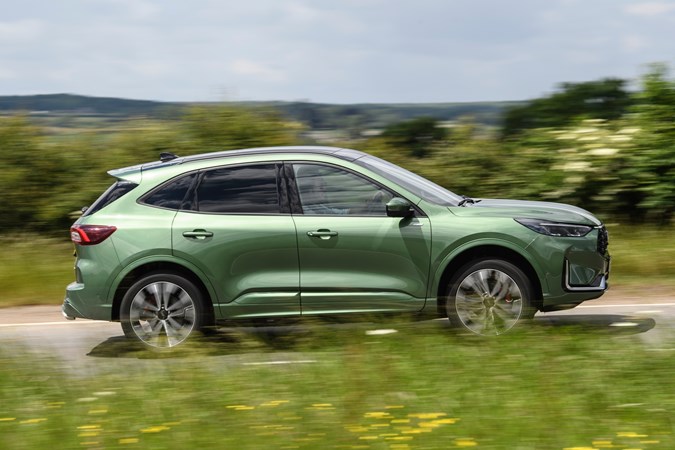
The plug-in hybrid model has a little more grunt. It has a bigger battery pack and a more powerful electric motor which boosts output to 243hp – up from 225hp in the pre-facelift car – to improve performance. Around two seconds have been knocked off the 0-60mph time, taking it down to a brisk 7.3-seconds.
On the road the regular hybrid feels perfectly adequate, with enough punch to get up to motorway speeds comfortably on all but the shortest sliproads. The engine can get rather vocal if you’ve welded your foot to the floor, although that can be said of many rival hybrids, too. Crucially, the brakes on hybrid models are easy to modulate and progressive, unlike a number of rivals.
If your budget can stretch to it (and if you have a charger at home), we’d recommend opting for the plug-in model. It’s more expensive to buy but offers the potential of rock-bottom running costs if you keep the battery charged up and make the most of its electric range of over 30 miles in the real world. The added performance is also useful, making the Kuga feel quite nippy.
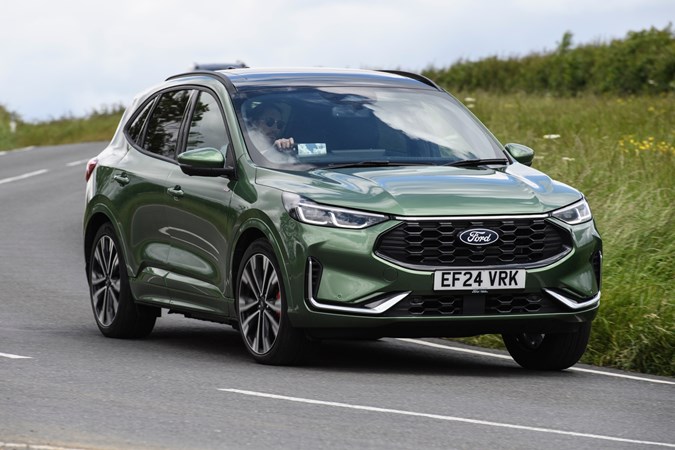
What’s it like to drive?
- Will satisfy most drivers
- Not as sharp as previous model, though
- ST-Line models have a firmer ride
The Ford Kuga is one of the best-handling family SUVs on the market. However, this hardly comes as a surprise, as it’s based on the Focus which is one of the best-handling family hatchbacks on sale. The manual model is particularly good fun to drive, thanks to its satisfying shift action and excellently weighted pedals.
The competition is starting to catch up, though. For example, the Kuga’s steering is communicative, but it’s not as sharp as the old car and the level of assistance is perhaps a touch too much for keen drivers. On this front, you’re splitting hairs choosing between this and the SEAT Ateca.
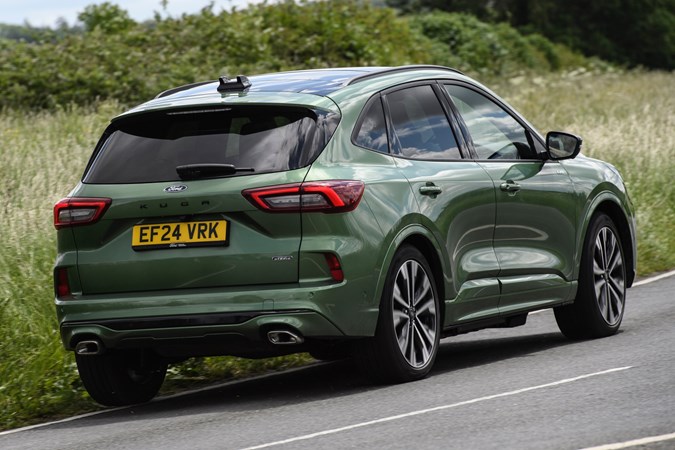
Still, all Kugas – unlike the Focus hatchback range – feature fully independent rear suspension. Don’t worry, we won’t get too technical. Basically, it’s a more sophisticated kind of suspension than what’s fitted to most rivals, which helps the Kuga handle better.
We have a word of warning if you’re tempted by the ST-Line model’s sporty looks. It comes with sports suspension, which is noticeably harsher than the regular models. It certainly helps tighten the handling further, making it surprisingly fun, but try before you buy.
The ride in Titanium models is more compliant, but the Active is the most comfortable Kuga. Its suspension is raised up to give more ground clearance and wheel travel for traversing rough tracks. That translates to fantastic ride quality on all but the worst road surfaces. It’s not really an off-roader, though. A four-wheel drive non-plug-in hybrid is available, but it’s geared more towards slippery roads than mud-plugging.


